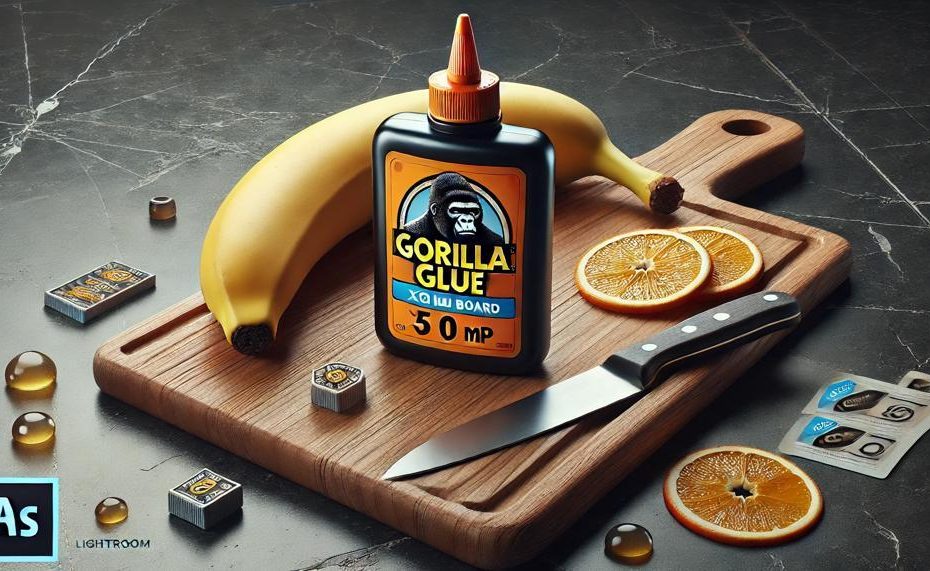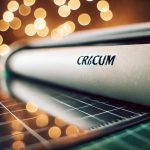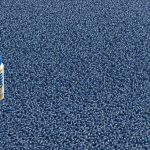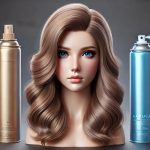Yes, you can use Gorilla Glue on your glasses, but there are several important considerations to keep in mind. Gorilla Glue is renowned for its incredible bonding strength and versatility, making it seem like a viable option for repairing eyeglasses. However, its expanding nature as it dries can potentially damage delicate components of your glasses if not applied with utmost precision.
Here are the key takeaways:
- Thoroughly clean the areas you plan to glue before application.
- Avoid applying Gorilla Glue near lenses or hinges, as the expansion could cause cracking or misalignment.
- Use a minimal amount of glue, and hold the pieces firmly in place while it dries.
- Allow at least 24 hours for the Gorilla Glue to fully cure before handling the glasses.
- Carefully sand down any excess glue to ensure a smooth finish.
While Gorilla Glue offers a strong, water-resistant, and clear bond that can save you money in the long run, precision is crucial when using it on glasses. Alternatively, you may want to consider clear epoxy adhesives specifically designed for eyewear repair. Seeking professional advice may also be necessary for specialized repairs.
Table of Contents
Can You Use Gorilla Glue on Glasses?
Gorilla Glue can technically be used on glasses, but it’s generally not recommended as a safe or effective option for repairing eyewear. While its strong adhesive properties may seem appealing, there are several drawbacks that outweigh the potential benefits.
The expanding nature of Gorilla Glue as it dries poses a significant risk of damaging delicate parts of glasses, such as lenses or hinges. This expansion can lead to cracks, warping, or misalignment, rendering the glasses unusable or even hazardous to wear.
Furthermore, the bond created by Gorilla Glue may degrade over time, causing the repair to fail and potentially compromising the structural integrity of the glasses. This could result in unexpected breakage or separation, posing a safety concern for the wearer.
While Gorilla Glue may seem like a cost-effective solution, using it on glasses could potentially void any existing warranties or guarantees from the manufacturer. This could lead to additional expenses if professional repairs or replacements become necessary.
Instead of risking permanent damage or voiding warranties, it’s advisable to explore alternatives specifically designed for eyewear repair. Clear epoxy adhesives formulated for glasses are a safer and more reliable option, as they are engineered to bond without expanding and maintain flexibility.
If the repair is particularly complex or involves specialized components, seeking professional assistance from an optician or eyewear repair service is highly recommended. They have the expertise and specialized tools to ensure a proper and lasting repair, prioritizing both functionality and safety.
Benefits of Using Gorilla Glue on Glasses
While Gorilla Glue is a versatile and powerful adhesive, its use on glasses should be approached with caution. However, compared to other types of glue, Gorilla Glue offers several potential benefits when used correctly on glasses:
| Benefit | Description | Importance |
| Exceptional Bond Strength | Gorilla Glue is a polyurethane-based adhesive known for its incredible bonding power, which can create a strong and durable bond on glass surfaces. | Ensures a long-lasting repair and prevents the glasses from easily breaking or falling apart. |
| Waterproof and Weather-Resistant | Once cured, Gorilla Glue forms a waterproof and weather-resistant bond, making it suitable for both indoor and outdoor use. | Protects the repaired glasses from moisture, humidity, and environmental factors, extending their lifespan. |
| Versatile Application | Gorilla Glue offers different formulas, such as liquid or gel, allowing for more controlled application and better coverage on various glass surfaces. | Ensures precise and efficient application, reducing the risk of messy or uneven bonding. |
However, it’s crucial to note that while Gorilla Glue can potentially bond glass, it may not be the optimal choice for repairing eyeglasses. The smooth surface of glass can pose challenges for adhesion, and specialized adhesives designed specifically for eyewear repair often provide stronger, more transparent, and longer-lasting bonds.
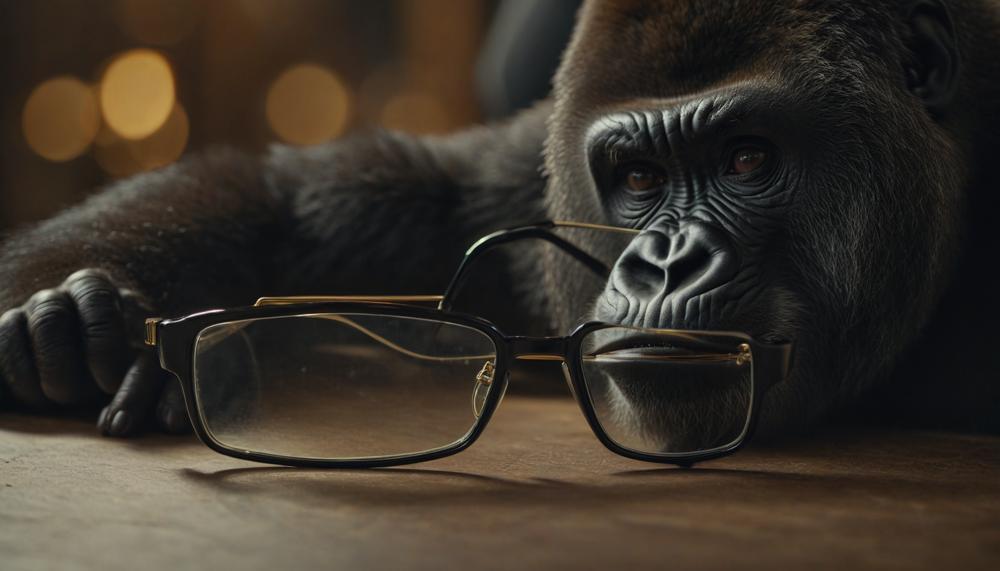
Precautions to Take When Applying Gorilla Glue to Glasses
When applying Gorilla Glue to glasses, it’s paramount to exercise caution to prevent damaging the delicate lenses or frames. Here are some crucial precautions to heed:
| Proper Surface Preparation | Meticulously clean and degrease the glass surfaces to ensure optimal adhesion. Any residue or contaminants can inhibit bonding. | Gorilla Glue Application Tips |
| Precise Application | Apply the glue sparingly and with pinpoint accuracy to avoid inadvertent contact with lenses or frame surfaces not intended for bonding. | How to Use Gorilla Glue (wikiHow) |
| Ventilation and Safety Gear | Gorilla Glue emits fumes, so work in a well-ventilated area and consider wearing a respirator mask. Gloves and eye protection are also recommended. | Gorilla Glue Safety Data Sheet |
It’s worth noting that while Gorilla Glue offers exceptional bonding strength, specialized optical adhesives designed specifically for eyewear may provide better results and compatibility with glass lenses and frames.
How to Apply Gorilla Glue to Glasses
Applying Gorilla Glue to glasses requires careful preparation and precise application to ensure a strong, lasting bond without damaging the delicate components. Here are the steps to properly apply Gorilla Glue to glasses:
| Step 1 | Thoroughly clean the surfaces | Remove any dirt, grease, or debris from the areas where you’ll apply the glue. Use a clean cloth dampened with rubbing alcohol or glass cleaner for optimal surface preparation. |
| Step 2 | Protect the lenses and hinges | Cover the lenses and hinges with masking tape or a protective material to prevent the glue from accidentally spreading to these delicate parts. |
| Step 3 | Apply a thin, even layer of glue | Use a toothpick or a small, disposable brush to apply a thin, even layer of Gorilla Glue to the areas you want to bond. Avoid using excessive amounts, as the glue expands as it dries. |
| Step 4 | Clamp or hold the pieces firmly | Carefully align the pieces and clamp or hold them firmly in place for at least 24 hours, allowing the glue to fully cure and create a strong bond. |
| Step 5 | Sand down any excess glue | Once the glue has cured, use fine-grit sandpaper to gently remove any excess glue that may have expanded or seeped out, ensuring a smooth finish. |
It’s crucial to work in a well-ventilated area and follow the manufacturer’s instructions for optimal results. Consider seeking professional assistance for complex repairs or if you’re unsure about using Gorilla Glue on your glasses. Additionally, explore alternative adhesives specifically designed for eyewear repair, as they may provide a more specialized solution.
How Long Does It Take for Gorilla Glue to Dry on Glasses?
| Adhesive Type | Drying Time | Curing Time |
| Gorilla Glue | 1-2 hours | 24 hours |
| Epoxy | 5-10 minutes | 24 hours |
| Super Glue | 10-60 seconds | 24 hours |
| Optical Cement | 3-5 minutes | 24-48 hours |
Gorilla Glue, being a polyurethane-based adhesive, takes longer to dry than most other types of glues used for eyewear repair. While its initial drying time of 1-2 hours is comparable to epoxy, it requires a full 24 hours to completely cure and achieve its maximum bond strength. This extended curing period allows the polyurethane to fully cross-link and form a waterproof, temperature-resistant bond.
In contrast, super glues (cyanoacrylates) and optical cements dry much faster, within seconds or minutes. However, these adhesives may not offer the same level of durability and longevity as Gorilla Glue, especially when exposed to moisture or temperature extremes.
When working with glasses, the choice of adhesive depends on the specific repair needs and the materials involved. For delicate lens replacements or hinge repairs, optical cements or super glues may be preferred for their rapid drying times and precision application. However, for reinforcing frames or securing larger components, the slower drying but stronger bonding of Gorilla Glue could be advantageous.
It’s worth noting that proper surface preparation, application technique, and environmental conditions (temperature, humidity) can significantly impact the drying and curing times of any adhesive.
Alternatives to Using Gorilla Glue on Glasses
| Alternative Option | Description | Advantages |
| Cyanoacrylate (Super Glue) | A fast-drying adhesive designed for bonding non-porous materials like plastic and metal. It forms a strong, transparent bond. | Quick drying time, clear finish, suitable for delicate repairs. |
| Epoxy Adhesive | A two-part adhesive that cures into a durable, waterproof bond. It can fill gaps and bond dissimilar materials. | Excellent strength, gap-filling properties, waterproof and heat-resistant. |
| Optical Cement | A specialized adhesive formulated for bonding optical components like lenses and frames. It dries clear and is often UV-cured. | Designed for eyewear repairs, clear finish, UV-curing for precision. |
When repairing glasses, it’s crucial to choose an adhesive tailored for the task at hand. While Gorilla Glue offers robust bonding, it may not be the ideal choice for delicate or precision repairs. Cyanoacrylate (super glue) and epoxy adhesives are excellent alternatives, providing strong yet transparent bonds suitable for eyewear components. Optical cements, specifically formulated for lens and frame bonding, offer a specialized solution with precision curing and a clear finish.
Ultimately, the choice depends on the specific repair requirements, materials involved, and desired characteristics like drying time, gap-filling ability, and bond strength. Always follow manufacturer instructions and take necessary safety precautions when working with adhesives.
Conclusion
While Gorilla Glue’s impressive bonding strength may seem appealing for repairing eyeglasses, exercising caution is paramount. The adhesive’s expanding nature as it cures poses risks of cracking delicate lenses or misaligning hinges, potentially rendering your glasses unwearable. Additionally, the bond could degrade over time, compromising structural integrity and leading to unexpected breakage – a safety hazard.
Rather than jeopardizing your eyewear, explore alternatives explicitly designed for optical repairs. Clear epoxy adhesives formulated for glasses create flexible, transparent bonds without expanding. For intricate repairs involving specialized components, consulting a professional optician is highly advisable. Their expertise and specialized tools ensure proper, lasting fixes that prioritize functionality and safety.
While Gorilla Glue’s strength is undeniable, its characteristics make it ill-suited for eyewear applications. The potential for damage, degradation, and voided warranties outweighs any perceived cost benefits. When it comes to repairing glasses, prioritizing your vision and seeking appropriate solutions from trusted industry resources is crucial.

